No trip to Costa Rica is complete without seeing (or hearing) a monkey.
*This post may contain affiliate links, as a result, we may receive a small commission (at no extra cost to you) on any bookings/purchases you make through the links in this post. As an Amazon Associate, we earn from qualifying purchases. Read our full disclosure
Whether you’re finding shade underneath tall trees at the beach or grabbing a bite at a roadside soda, you never know when a few wild monkeys might cross your path and say hi. Some people even like to joke that there are more monkeys in Costa Rica than its people! We’re not sure how accurate that joke is, but it can’t be too far from the truth.
Costa Rica is the most biodiverse country in Central America—home to half a million species of wildlife. Many of these are considered endangered or rare, but luckily, ecotourism is also a big part of Costa Rican culture. Today, there are plenty of ethical and low-impact ways nature enthusiasts can support wildlife in Costa Rica.
Some of the most famous wildlife attractions are, without a doubt, the Costa Rican monkeys. There are a total of four Costa Rican monkey species scattered all over the country. If you know where to look, you might be lucky enough to spot all four.
The big four monkey species include the mantled howler monkey, the white-faced capuchin monkey, the spider monkey, and the squirrel monkey.
Wondering how to differentiate one monkey from the other species? Or maybe you’re looking for itinerary tips so you can spot them all at once? We’ll answer your questions here, as well as give tips for responsible travel.

Traveling Soon? Here is a list of our favourite travel providers and accessories to help get you ready for your upcoming trip!
Let’s swing right to it–here’s all you need to know to see monkeys in Costa Rica:
Types of Monkeys in Costa Rica
White-Faced Capuchin Monkeys
Status: Endangered
Features: White face, black coat, prehensile tail
Spotted in: Manuel Antonio National Park, Cahuita National Park, Osa Peninsula, Monteverde Cloud Forest, Arenal Volcano National Park, Nicoya, Tortuguero National Park, Palo Verde National Park
The White-Face Monkey, known as cara blanca in Costa Rica, is one very recognizable monkey, frequently featured in movies and TV shows. Their striking appearance makes them very memorable, with a signature white face, black body, and prehensile tail.
White-faced capuchins are social monkeys who usually travel in troops of 5 to 30 members. They’re considered the most intelligent New World Monkeys: white-faced capuchins have been observed to use tools to open up oyster shells, and even kill venomous snakes. They also work together to hunt squirrels and even squirrel monkeys.
The white-faced monkeys are known to walk on the ground more than any other species of New World Monkeys. They will eat anything from the forest floor to the tree-top canopy. As omnivores, their diet includes fruit and leaves, as well as insects, eggs, crabs, and even lizards. Beware, though, as they’re also smart enough to steal food from unsuspecting tourists. If you spot any white-faced capuchin monkeys in Costa Rica, don’t feed them and keep any bananas away–apparently, that’s one of their favourites!
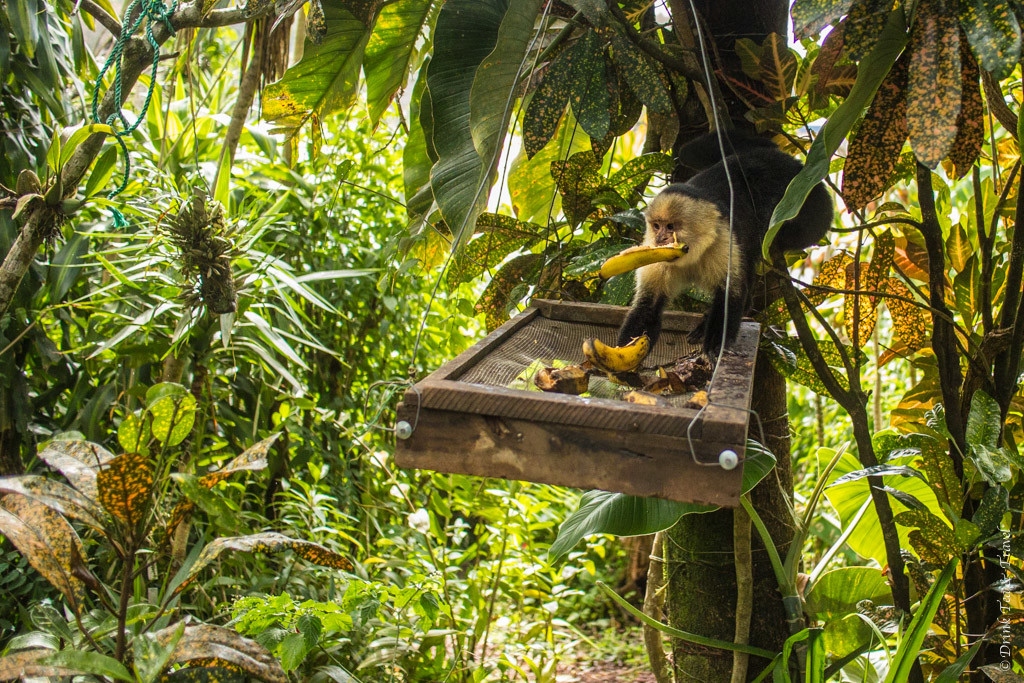
Howler Monkeys (Mantled Howler Monkey)
Status: Endangered
Features: Black and brown coat with yellowish hue at the sides, very prehensile tail, known for loud calls that can be heard from miles away
Spotted in: Guanacaste, Manuel Antonio National Park, Osa Peninsula, Arenal Volcano National Park, Tortuguero, Corcovado National Park, Sarapiqui, Caribbean Coast
Howler monkeys, also called mono congo in Costa Rica, are New World Monkeys, and despite being the largest of the four monkey species, you’ll probably hear them before you see them. They’re said to be the loudest land animals, and there’s a good chance you’ll hear their loud howling sounds all around Costa Rica. Their guttural calls are extra loud thanks to a special bone in their throat that helps add more volume.
So, why the howling? The reasons are random: it can be the rain, it can be dogs nearby, sometimes the people, and sometimes at the sunrise or sunset.
But don’t let the startling noise fool you; these monkeys are actually very peaceful folivores. This means they eat mostly leaves and spend a lot of time sleeping to help with digestion and to survive the dry, arid heat. They also don’t move as much as the other monkeys.
If you ever see a howler monkey in the wild—they’re commonly spotted in Guanacaste, sometimes even just on the side of the road—be careful not to startle them. They don’t get aggressive, but their means of attack is by peeing, which isn’t all that pleasant, either.
They are social monkeys and usually travel in troops with anywhere between 6 to 20 members. Together, they forage for leaves and fruits in canopy treetops, and it’s common to see them bringing several small babies in tow. You’ll rarely see a mantled howler monkey on the forest floor. They howl through the trees to communicate with their troops and to navigate the environment.
Unfortunately, because of the many construction developments in Costa Rica and the clearing of dry forests, the howler monkey population has declined by 50%. Aside from habitat destruction in Costa Rica, many howler monkeys also end up being electrocuted by uninsulated power lines. Thankfully, there are rescue operations underway. For instance, two adolescent howler monkeys are being rehabilitated at Jaguar Rescue Center in Puerto Viejo.
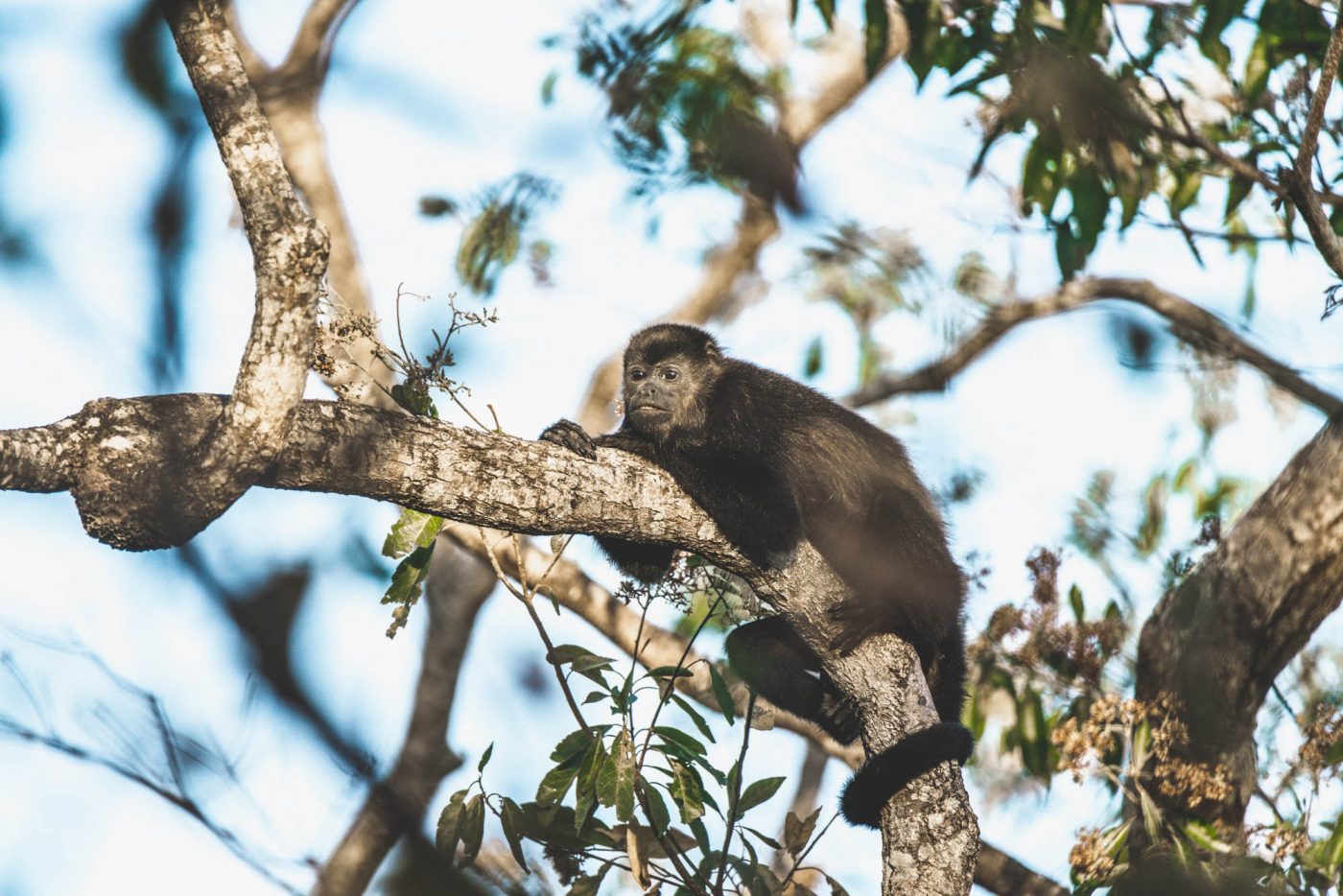
Central American Squirrel Monkeys
Status: Highly Endangered
Features: Smallest of Costa Rica’s monkey species, brown/greenish colour, black/gray cap, white face, orange hands and feet, no prehensile tail
Spotted in: Manuel Antonio National Park, Osa Peninsula, Corcovado National Park
Known as mono titi in Spanish, the Central American squirrel monkey is the smallest and rarest among all the other monkeys in Costa Rica.
Squirrel monkeys are social and typically live in big troops, ranging from 20 to 75 members. They are omnivores who feed on fruits, seeds, flowers, bird eggs, and insects.
Though they’re small, they have large personalities. They have expressive faces and playful, curious demeanours, making them unpredictable and entertaining to watch.
There are two subspecies in Costa Rica: the Black-Crowned Squirrel Monkey in the forests of Southern Costa Rica, and the Gray-Crowned Squirrel Monkey endemic to the area between Quepos and Rio Térraba.
Unfortunately, these high-spirited and lively squirrel monkeys have been victims of the illegal pet trade over the years. That, plus the deforestation and loss of habitat, makes squirrel monkeys the rarest monkeys to find in Costa Rica. However, there are multiple efforts for local conservation, rescue, and rehabilitation to hopefully get their numbers up.

Spider Monkeys (Geoffroy’s Spider Monkey)
Status: Severely Endangered
Features: Distinctive pot belly, long legs, long prehensile tail, and long, slender arms
Spotted in: Corcovado National Park, Monteverde Cloud Forest, Osa Peninsula
Geoffroy’s Spider Monkeys are one of the biggest New World Monkeys. They have other names too, such as the Black-Handed Spider Monkey or mono araña in Spanish.
They’re known for their intelligence, social behaviour, vocal communication, as well as their long prehensile tail that can support their entire body weight. Because of that feature, spider monkeys often move swiftly through the treetops.
They’re the most active of all four Costa Rican monkeys, usually keeping busy during the day. You’ll find them way up in the trees, as they feed on fruit, nectar, leaves, bark, and occasionally eat insects.
Spider monkeys used to be quite common throughout Costa Rica, but monkey populations have drastically decreased due to deforestation, hunting, and poaching. A Geoffroy’s spider monkey is naturally inclined to form a troop, but if it can’t find other members to create one, it will join a troop of white-face monkeys instead.
Larger troops tend to thrive in more remote, inaccessible places that support their troop size as well as their diet. Meanwhile, in wildlife reserves, multiple programs are being implemented to help their numbers go up.

Where to Find Monkeys in Costa Rica
Corcovado National Park
Dubbed by National Geographic as “the most biologically intense place on earth,” Corcovado is the top place to go if you want to see all four monkeys in Costa Rica. It’s the only park in the country where you have the chance to spot all four!
Besides that, the abundance of wildlife in this national park is unmatched. The 424 square kilometre park has 10 different ecosystems and 140 mammal species, including the four Costa Rican monkey species, exotic mammals, reptiles, insects, birds, and other wildlife. This is a must-see as the crown jewel of wildlife viewing.
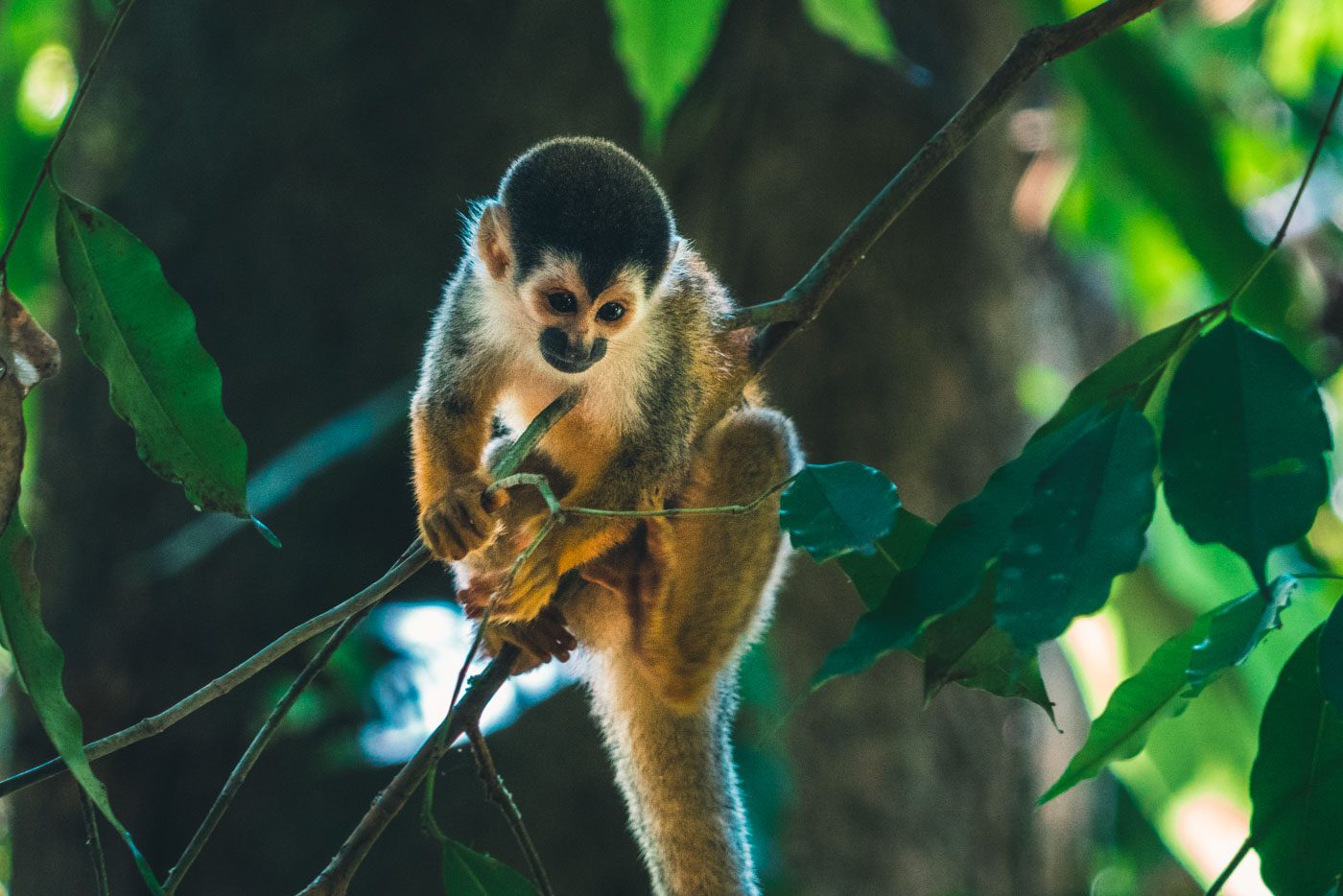
READ NEXT: Visiting Corcovado National Park
Manuel Antonio National Park
Another popular national park is Manuel Antonio, known for its beautiful beaches, lush tropical rainforests, and abundant wildlife. Located on the Pacific Coast, it’s one of the smallest national parks in Costa Rica, but its biodiversity is very impressive.
This park holds many endangered species, like three of Costa Rica’s iconic monkeys: howler monkeys, white-faced monkeys, and squirrel monkeys. Apart from that, you can also see three-toed sloths, scarlet macaws, and a plethora of other wildlife. There are over 100 mammal species and 200 bird species throughout the park, so there are tons to see.

READ NEXT: 13 Best Things to Do in Manuel Antonio
Tortuguero National Park
Tortuguero translates to “Land of the Turtles,” and true enough, this national park is best known as a sea turtle wildlife refuge. Hundreds of sea turtles nest and lay their eggs on Tortuguero each year, but there’s more to the park than that.
Its remote location encourages the uninterrupted growth of local wildlife. There are 300 species of birds and 60 species of mammals here, and it’s one of the best places in Costa Rica to see spider monkeys in their habitat.

READ NEXT: Guide to Visiting Tortuguero, Costa Rica in 2023
Monteverde Cloud Forest
Only 1% of the world’s remaining forests are classified as cloud forests, making Monteverde one of Costa Rica’s most special preserves. It’s made up of 90% virgin rainforest and is very rich in biodiversity. Here, you can find howler monkeys and white-faced capuchin monkeys, as well as 6 species of cats, 400 birds, 180 reptilian and amphibian species, over 3,000 plants, and 120 other mammals.
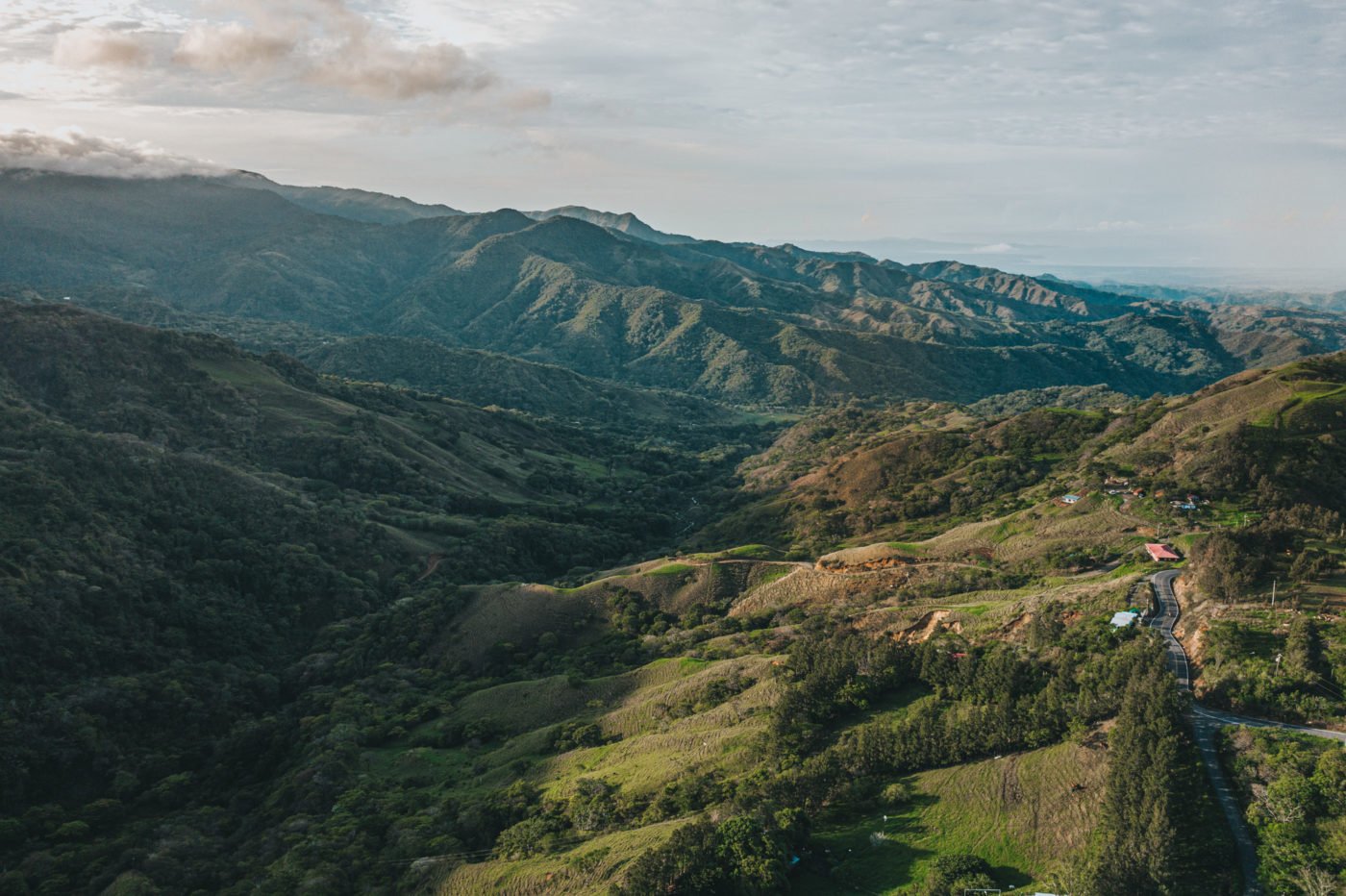
READ NEXT: 7 Reasons to Visit Monteverde Cloud Forest
Cahuita National Park
Cahuita is well-known for its lovely, untouched coral reef. Visitors often head there to dive, snorkel, and maybe go on a boat tour, so it might be shocking to see (or hear!) howler monkeys in the wild. The park is actually a great place to find monkeys, specifically howler and white-faced capuchin monkeys.
Playas del Coco
On the Northern Pacific Side of Costa Rica is one of the oldest beach towns in Guanacaste. It’s very accessible since it’s the closest beach to Liberia Airport. Playa de Coco is known for beautiful sunsets, but it’s also home to several troops of howler monkeys. You can find them almost anywhere, along the roads towards the beach, and even downtown.
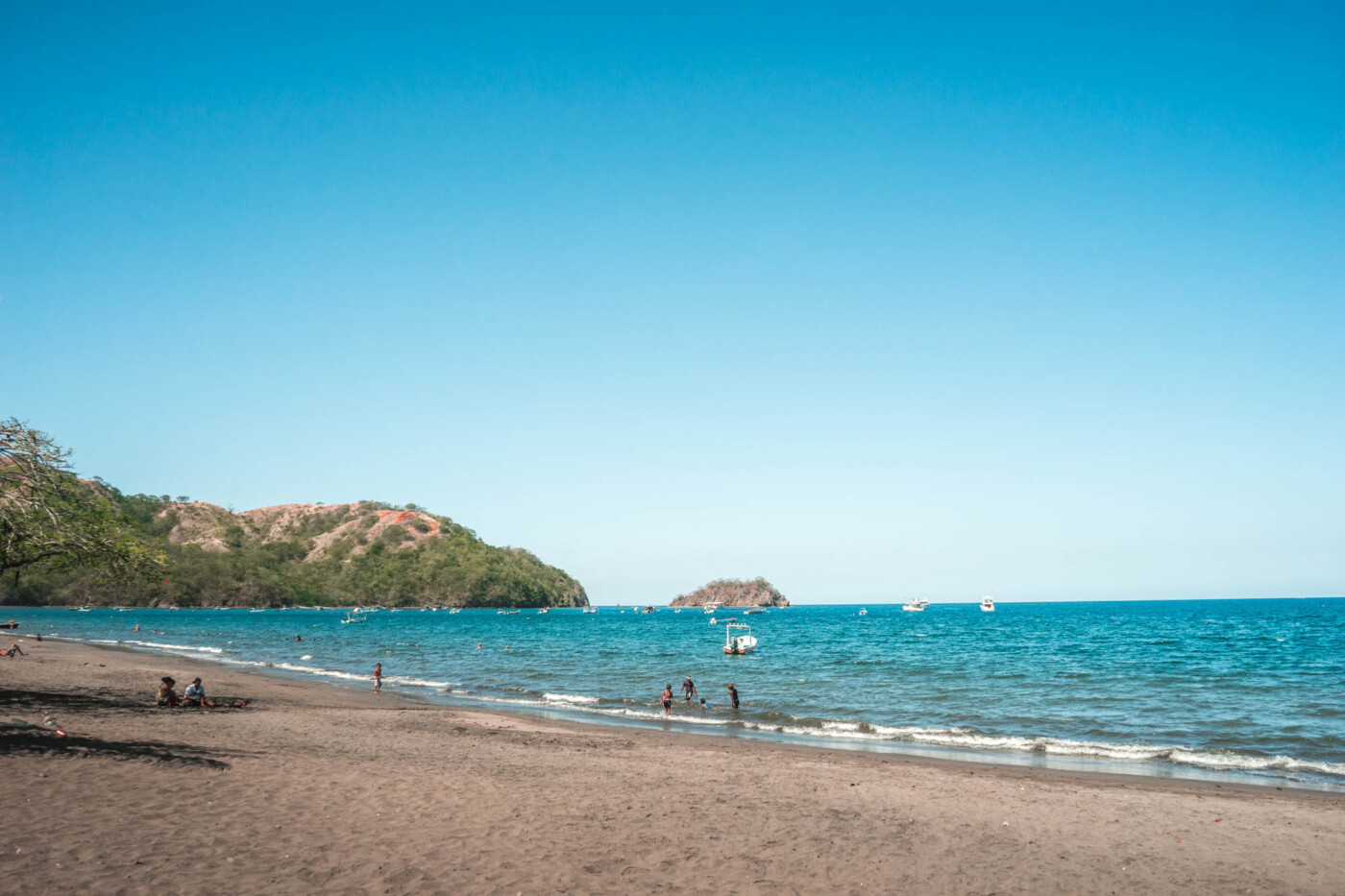
READ NEXT: Things to Do in Playa del Coco
Responsible Tips for Spotting Monkeys in Costa Rica
If you want to see monkeys in Costa Rica, keep in mind that you’re visiting wild animals in their natural habitat. Being a responsible tourist is key to keeping the monkey population safe in Costa Rica. Here’s how we can do our part to help out the mammal species:
Keep your distance. Whether it’s on the side of the road or at a park, tourists shouldn’t get close enough to touch the monkeys. This is for their safety as much as it is for your own.
Don’t feed monkeys. Access to human food can affect their natural feeding behaviour, leading to bigger health issues.
Don’t carry food, especially ripe fruit, with you. Monkeys have a sharp sense of smell and are notorious for stealing food from tourists.
Avoid tours or guides offering to let you pet monkeys. There are no ethical tours in Costa Rica that let tourists touch or pet the monkeys. So if you see any, don’t entertain them.
Take selfies and photos from afar. Don’t let taking photos get in the way of the monkeys’ natural habitat. Invading their space can cause stress and anxiety and may lead to aggressive behaviour towards humans, so it’s best to stay away.
Support efforts by ethical animal sanctuaries, refuges, and national parks. Respect the rules and regulations in place, offer donations if you’re able, and volunteer if you’re inclined–these actions can help a lot.
Stand against the illegal pet trade. Don’t support anyone who keeps a pet monkey. Instead, donate or show support for rescue centres that focus their resources on rehabilitating the endangered species and rehoming them back to their monkey habitats.
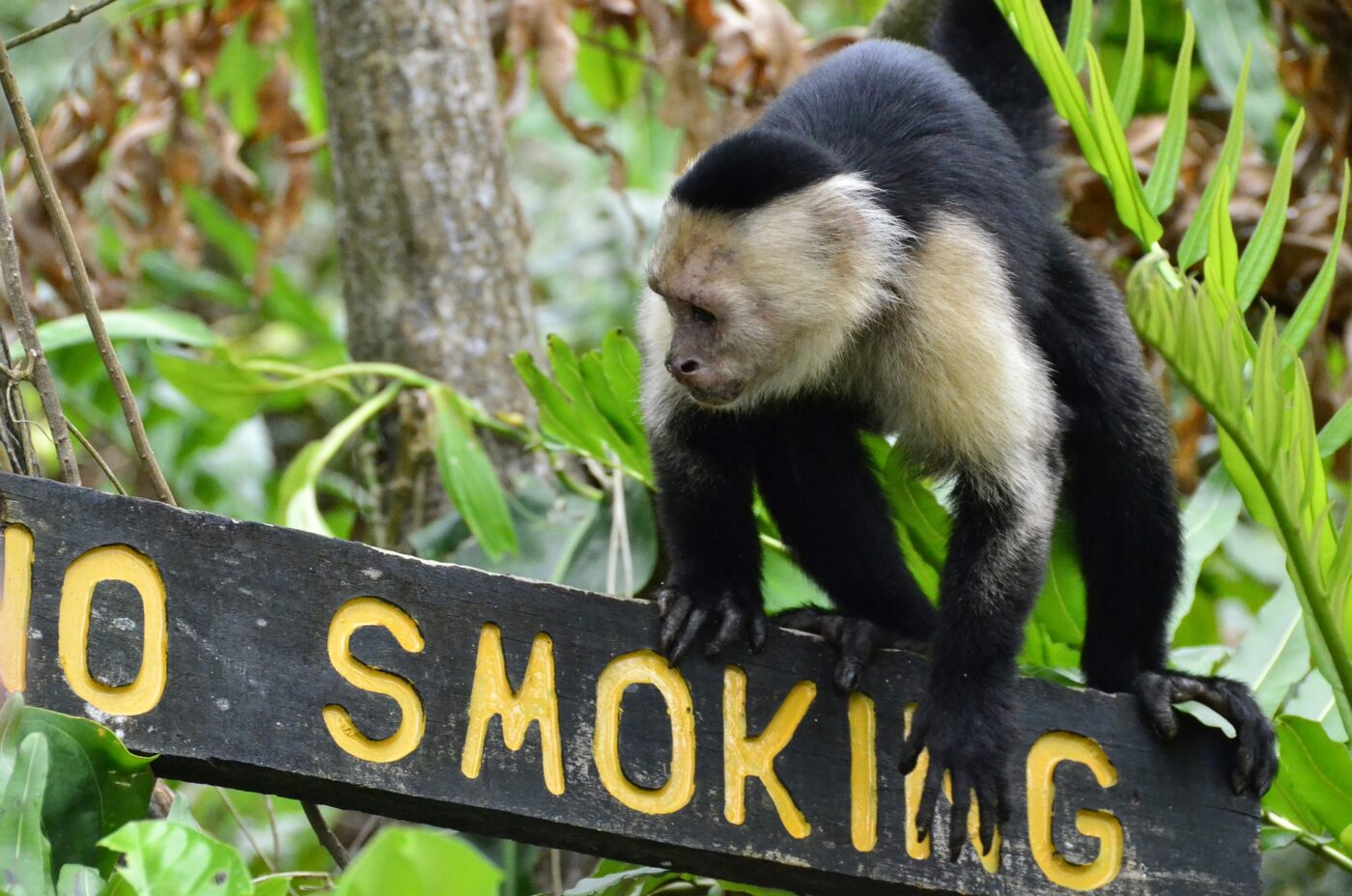
Conclusion
Costa Rica’s monkeys are a top wildlife attraction, and many enthusiasts come from all over the world to see all four species for themselves. Whether it’s the Central American squirrel monkey, spider monkey, howler monkey, or white face monkey you want to see, there are responsible ways to see monkeys in Costa Rica.
Spotting monkeys is a great way to enjoy your trip to Costa Rica, from the Caribbean Coast to the Pacific. How many monkeys do you think you’ll come across?

